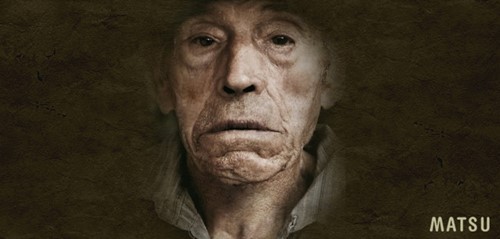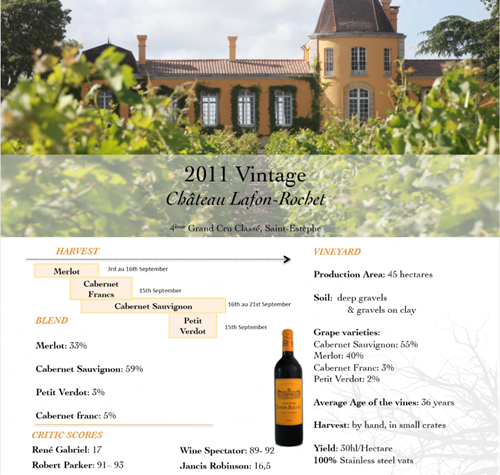
A couple of years back, during the blissful ignorance of my wine youth, I spotted a very interesting bottle of red on Amazon and I was immediately struck by it. Its label was…different. It was quirky with a comic book style illustration and it screamed “buy me”. It was The Squid’s Fist 2016 by Some Young Punks and for around £18 It wasn’t the usual bottle I’d go for but given I had the money and it was coming up to Christmas I thought I’d give it a go.
It was ruby in the glass and I remember putting my nose in and being hit with vanilla, god I love vanilla. I vaguely remember getting cherries on the palate, but it was the mouthfeel that I remember most vividly. It was silky smooth; in fact, it was probably the smoothest wine I’d ever had. It also had a nice long finish with a touch of peppery spice at the end. I was in wine heaven. I instantly declared Sangiovese my favourite grape as it had tempered the boldness and spice of the shiraz to give me such a pleasurable experience. I still salivate to this very day whenever I see a Sangiovese as I identify it with that vanilla smoothness. I was straight on the internet that night, half pissed, on Amazon buying another bottle because why wouldn’t I?! I was stopped in my tracks by my more sober (and infinitely more sensible) partner.
I raved about this wine to anyone who would listen and my raving about it did garner some interest amongst my friends but as time went by the hysteria faded away as I discovered other new and interesting wines. Then, about 6 months later, I was given a bottle for my birthday. I like to think I’m a manly bloke who doesn’t have time for feelings and shit, but I’ll admit there was squealing. It had been spotted in a local wine shop and the purchaser had heard me blab on about it, so they picked up the 2015 vintage for me. Happy days!
My love affair with this wine had been reignited. I looked longingly at it on the wine rack and every time I visited the kitchen, I would gently caress the neck of the bottle and whisper “don’t worry I’ll open you soon”. And open it I did! I honestly couldn’t wait. I had previously declared this wine in the top 3 wines I’d ever tasted up to that point and it was still there. I repeated the same ritual (I still had a lot to learn about decanting wine) and stuck my nose in to get a whiff of that vanilla. It was there, it wasn’t as prominent or powerful, but I could smell it…I think. And then I drank it. I defaulted to my not so orgasmic face as the wine slid down my throat but immediately after swallowing, I remember thinking that it just wasn’t the same somehow. It wasn’t as smooth. The finish wasn’t as long. It simply wasn’t as good.
But no bother, wines take a good 30 minutes to get going so I thought it would come into its own after the first glass. But it didn’t. In fact, it got worse. That gorgeous vanilla taste had disappeared. Gone also was the velvety smooth mouthfeel that I literally had dreams about. I wasn’t even that fussed on the spice. It lacked body, it felt….watery, tasteless, shite. I finished the bottle very disappointed indeed and I’ve never gone back to it.
It’s grated me ever since and I’ve always wondered why. How could a wine taste so different between vintages and how was it that the older wine tasted much worse to me than the younger one? Was it faulty? Was it me? Had I not decanted it properly? Was I wrong in drinking a glass of something else prior to the 2015 vintage? Did I not cleanse my palate thoroughly enough? Are my taste buds shit?
This isn’t the first occurrence of inconsistency on my wine journey as it has also happened to my dad. He declared his Matsu El Viejo the best wine he’d ever tasted. Before we knew it, he had about 6 of the old geezers on his wine rack and he couldn’t wait to get a second bottle opened at a dinner party. A friend of the family who he lauded it to thought it was fabulous, but my dad wasn’t convinced that the second was as good as the first. We opened a bottle together not long after and I really liked it, but he still wasn’t convinced. The bottle was swiftly relegated to “decent wine” status and the remaining bottles were likely given out as presents. We’ve not seen a bottle of the old geezer on the wine rack since.

We recently went to Bordeaux and when we visited Château Lafon Rochet, we noticed a small card on the tasting table. It was a table of the vintages and what grapes were used in each vintage. Our tour guide then explained to us that they will alter the variations of the grapes for each vintage to suit that year’s climate, the ripeness of the grapes or even the whim of the winemaker. I had my first ever Eureka moment, I literally felt the light go on inside my head as my little digits of IQ came flooding through the door and running back to me. They vary the constituent grapes in each vintage! Of course they do! How had it taken me so long to realise?!
For Château Lafon Rochet, the variation was slight. The 2013 vintage is made up of 70% Cabernet Sauvignon and 30% Merlot whilst the 2011 vintage consists of 59% Cabernet Sauvignon, 33% Merlot, 5% Petit Verdot and 3% Cabernet Franc. You’ll notice that the variations are only slight, but we were assured that they will have made a difference to the taste for each vintage.
The Eureka moment wasn’t even for the Squid’s Fist or the Matsu, it was for Château Batailley Pauillac which has been infuriatingly inconsistent for me over the years. So, as I was researching for this article, I did some digging and noted that Château Batailley will also alter the constituent grapes within each vintage. The 2008 vintage is 75% Cabernet Sauvignon, 22% Merlot and 3% Cabernet Franc whilst the exquisite 2009 vintage consisted of 74% Cabernet Sauvignon, 22% Merlot and equal parts Petit Verdot and Cabernet Franc.

The tasting notes for the 2013 vintage Château Lafon Rochet

The tasting notes for the 2011 vintage of Château Lafon Rochet, notice the slight difference? The 2011 vintage is an absolute blockbuster too.
So, could this have happened for the Squid’s Fist? Did the quantities of its constituent grapes differ year to year and if so, why? I paid a visit to their website and quickly discovered that they did, and boy was I in for a shock! The 2016 vintage was 80% Sangiovese and 20% Shiraz which was why I raved about it. I love that vanilla smoothness you get with Sangiovese and I’m still yet to taste a bad one where Sangiovese is the dominant grape. The 2015 vintage, however, was 65% Shiraz and 35% Sangiovese. With the Bordeaux reds we were talking literally 1-2% difference per grape but for The Squid’s Fist we’re talking a fucking landslide in the vintage variance! A drastic change in the concentration of the grapes like this will completely alter the taste of a vintage and here was why I felt so let down by the 2015 vintage. The alcohol was a full percent stronger on the 2015 vintage too at 14%. At least the grapes were grown in the same bloody vineyard for both vintages.
Given what I discovered for The Squids Fist, I decided to have a look for the Matsu, but I couldn’t find anything concrete. All I could deduce was that the harvest normally takes place in the first 15 days of October and it is possible that differing weather during growing and harvest had led to an inconsistency between vintages.
I should point out at this point that I do still have a soft spot for The Squids Fist, and I will rekindle my love affair with it very soon. Knowing a little more about wine than I did then, I know that 2015 was a let down on its own. It should have been bold, big bodied, have an abundance of plums and dark fruits and be peppery but it wasn’t any of these things.
I’m not normally drawn to their type of label, but it does stand out in its typically Australian way and I find their website really cool. It’s no nonsense, easily navigable and the information you want is only a few clicks away. They do a good array of wines too with the following being some of their highlights:
They offer rare and biodynamic wines (of which, the fierce allure is one) and you can tell that they’re happy to experiment with their grape varieties. The Punks, as they’re called, are Jen Gardner, Col McBryde and Nic Bourke. Their bios were fun to read, and you can tell that despite the light heartedness of the website and brand that they are serious wine makers. Both Jen and Col both have PHD’s in the field and Col works out of Clare Valley whilst Nic appears to call McLaren Vale his home. Together, they’ve come up with some corkers and given what I now know, I’ll be making a purchase of The Squid’s Fist 2016 or 2017 soon as they lean heavily on Sangiovese versus Shiraz. So what can we learn from this little escapade? I’ve learnt that need to be careful of making bold proclamations about how good a wine is in the future after only having had one bottle. I’ve also discovered that many wines will have distinct characteristics for each vintage even though it is from the same vineyard under the same label. Just slight changes in constituent grapes will alter the taste and will mean that you prefer one vintage over another. In the case of Some Young Punks, they were happy to completely alter the makeup of the wine by making Shiraz the dominant grape for 2015 but having Sangiovese dominate in 2016. And finally, like anything wine related, you will benefit from doing some research because before doing my own I was never going to go back to the Squids Fist and I’ll soon have a couple on order. Hell, I might even buy a bottle of Château Batailley 2009!
Two wines from the same winery but from different vintages. What could possibly be different?
I’ve previously written about how the tastes of each vintage of a wine can vary depending on the amounts of constituent grapes, the weather, how it’s made and how it’s stored. It was one of the first to feature on the website and it was actually an eye opener upon doing the research.
My parents, partner and I recently visited Bordeaux and as part of a wine tour we visited Château du Tailhas. It was the smallest winery on our tour, and we were escorted by Luc Nebout, the owner of the estate.
He left a great impression and we loved his wine, so it was always on the cards that we were going to purchase a couple of bottles of his finest. I purchased the 2011 vintage at approximately €25 and my dad picked up the 2008 vintage at €30, not bad business at all!
Fast forward a couple of months later and we had the bright idea of taste testing each vintage to see which one was the best. It especially made sense given my previous article.
I’m a massive fan of Pomerol. It is the smallest of Bordeaux’s most well-known appellations and it is home to some of the most expensive wines in Bordeaux from Château Le Pin and Château Pétrus. It is located near St. Emilion on the right bank of the Gironde and Merlot is the most dominant grape for the appellation. Château du Tailhas is small in comparison to the major wineries in Pomerol so you can imagine the challenges that are presented to a small winery in a small appellation in one of the most popular wine making regions in the world.
Your typical Pomerol should give you notes of dark fruits (specifically plums and dark cherries) chocolate, earth, leather and spice. As Merlot is the dominant grape, the tannins are soft, and it blends well with other constituent grapes of the region such as Cabernet Sauvignon and Cabernet Franc.
I was looking forward to tasting both vintages and I was expecting the 2008 to just edge out the 2011 as they typically age well. I was also expecting a fair degree of consistency because the amounts of the constituent grapes didn’t differ at all between vintages. However, not for the first time on my wine journey, my expectations would not be met.
We started with the 2008 which had been decanted prior to my arrival. I had been warned that it wasn’t what I would be expecting but I thought that it would come good due to it having been decanted. It didn’t.
It was a lovely, dull ruby colour in the glass and the earthy, leathery nose was there which was a good start but then as it went down it just had nothing to give. The earthy, leathery notes did not follow through into the palette and it was hard to really discern any taste whatsoever. It lacked complexity, body and finish too and it made for a very disappointing experience. We gave up after one glass each and moved to the 2011 which was the same vintage that we tasted at the Château.
This was much better, it was a similar colour to the 2008 with a complex nose of parma violets, dark cherries and minerality. Much of this translated into the palette and there were hints of cherry and vanilla too, making for a much better wine. It was medium bodied, the flavours mixed very well, and it left a nice long finish as it went down. It couldn’t have been more different from the 2008.
So, given the fact that the wines were made with the same quantities of constituent grapes, how could the wines have been so different?
My first hunch was that weather may have differed greatly between the years, so I used the Wine Cellar Insider to check out the weather for each year.
In 2008, it appears that many wineries suffered from sustained poor weather with consistently cool temperatures and rain blighting the growing season. St. Emilion was struck by a massive hailstorm that will have likely wiped out the harvests of several smaller wineries and with Pomerol being in very close proximity to St. Emilion, it is likely several vineyards in this area were affected, including Château du Tailhas.
It is quite possible that they may have had to re-plant their grapes in May/June having lost their yields planted earlier that year. This would have left less time for the grapes to ripen and produce the flavours required for a good vintage. Interestingly though, Wine Cellar Insider reports that Pomerol produced some of the best wines in the region that year with some of the larger vineyards such as Lafleur, Le Gay and La Conseillante producing very fine wine. I wonder how they coped with the hailstorm…
2011 was markedly different but not necessarily in a good way. Spring arrived early with budding taking place in March. This was followed by one of the hottest April’s on record and then drought conditions throughout May and June. July turned out to be cold and wet, but the rain had come too late for some vineyards. The harvest was earlier in 2011 than pervious years and Wine Cellar Insider sums up by saying 2011 was a drinker’s year and not an investors. Red fruit characteristics dominated the tasting notes, coming through more prominently than the black fruit characteristics of which I’ve become custom to tasting.
It is very probable that the wines we’ve bought have been affected by the weather and I am very certain that the 2008 vintage was affected because the 2011 was at least a return to form. Luc Nebout knows what he’s doing so I doubt that the poor taste was down to the whim of the winemaker and the methods used to make the wine. Similarly, the bottles from both vintages travelled home in the same way and have been stored lying flat on our racks for the same amount of time so I’m confident it’s not anything that we’ve done to affect the taste.
So, if you’re expecting a bottle of wine to be the same for each vintage even when the same amounts of constituent grapes are used then think again because it’s not always the case! I’d recommend checking both the constituent grapes used and the weather in the region if you particularly enjoy a brand of wine and want to taste subsequent vintages.
Château du Tailhas is a good example of a Pomerol but the 2008 vintage that I had was poor. The 2011 was a return to form and was much more like how I remembered tasting it in the Château, but the disappointment of 2008 did spoil the experience a bit. Having done the research for this article, however, I wouldn’t buy either vintage again. I’d go for 2009 or 2010 to see how good they are. I took Luc’s business card when I visited so I might give him a call…